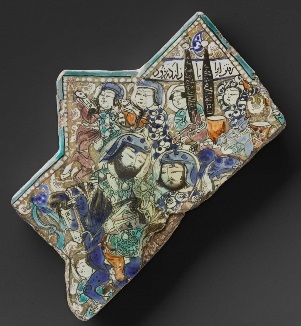3000-Year-Old Glazed Bricks Discovered in Iran’s Sardasht
Archaeological excavations in the Rabat hill of the northwestern city of Sardasht of Iran led to the discovery of glazed bricks from the time of the Mannaean, 8th century BC.
 |
Here is the translation of a report from the Department of Public Relations of the Research Institute of Iran’s Cultural Heritage, Crafts and Tourism Organization (ICHO):
Reza Heidari, the head of the fifth season of archaeological excavations in Rabat hill, said that his team has excavated old pottery, architectural remnants and glazed bricks in the site.
Heidari added that the bricks are decorated with geometric, mythological, and human motifs that represent a relationship between neo-Assyrian empire and art and religion.
“Among the ancient objects found on the site are the glazed bricks, the names of the pagan gods of Bel and Nebo and Mannaean kings are inscribed in Assyrian cuneiform,” said Heidari, noting that the excavations in Sardasht Rabat hill started in 2005.
The Mannaeans were ancient people who lived in today’s northwestern Iran, south of the lake Urmia, around the 10th to 7th century BC. Lived. At that time they were neighbors of the empires of Assyria and Urartu, as well as other small buffer states between the two, such as Musasir and Zikirti.
In the Bible (Jeremiah 51:27) the Mannians are called Minni. In the Jewish Encyclopedia (1906), Minni is identified with Armenia.
